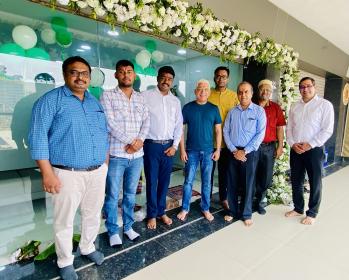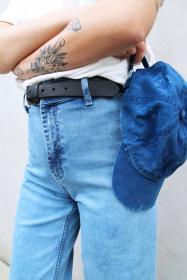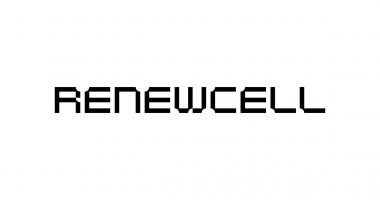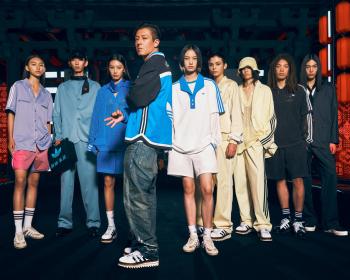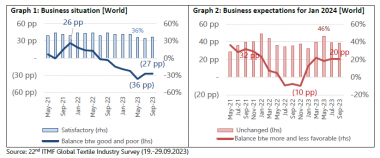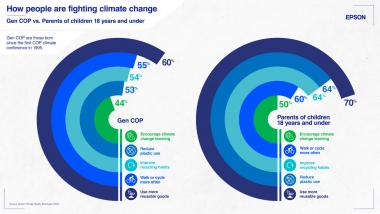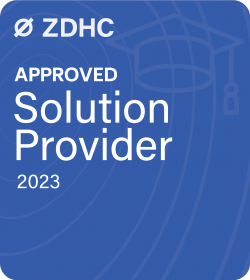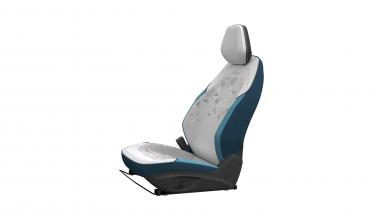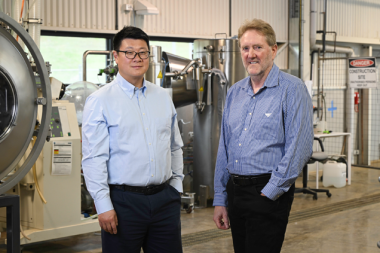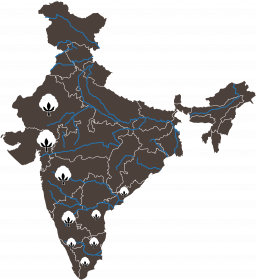A+A: New Work und Gesundheit in der hybriden Arbeitswelt
Hybrides Arbeiten ist gekommen, um zu bleiben. Viele Menschen schätzen die Vorzüge des mobilen Arbeitens so sehr, dass sie kaum noch im Unternehmen sind. Doch so mancher Arbeitgeber wünscht sich seine Leute wieder mehr zurück ins Büro. Wie können Arbeits- und Gesundheitsschutz gewährleistet werden, wenn Beschäftigte multilokal tätig sind. Wie bringt man sie dazu, auch gerne im Büro zu sein.
„So wie vor der Pandemie wird es nie mehr“, sagt Dr. Stefan Rief vom Fraunhofer IAO. „Allein der Wegfall des Arbeitsweges ist für die Menschen eine große Zeitersparnis. „Diese Zeit wird teilweise darauf verwendet, mehr zu arbeiten. Aber viele nutzen sie auch für ihre Freizeit und soziale Aktivitäten“, ergänzt Dr. Michael Barth, Arbeitsmediziner bei der B·A·D GmbH. „Das wollen die Menschen sich nicht mehr wegnehmen lassen.“
Umgekehrt sind viele Beschäftigte der Videokonferenzen und des Home Office überdrüssig. Sie sehnen sich nach Kontakt mit den Kollegen. „Es braucht grundsätzlich attraktive Arbeitsstätten, damit die Leute, die Zeit, die sie mit dem Wegfall des Arbeitsweges sparen, gerne investieren, um wieder ins Büro zu kommen“, sagt Barth. „Unterstützende Angebote wie Kantine und Kinderbetreuung können da helfen.“
Wichtig ist auch Transparenz. Denn einige fürchten, niemanden im Büro anzutreffen. Weil Menschen Menschen anlocken, sollte sichtbar gemacht werden, wer wann vor Ort ist. „Wenn ich weiß, dass bestimmte Kollegen da sein werden, dann komme ich auch“, sagt Rief. „Es muss auch zu sehen sein, was in den Räumen passiert. Im Prinzip ist so etwas wie ein Centermanager nötig, um das Büro zu kuratieren. Büros entwickeln sich eher zu Betreiberimmobilien, um die sich jemand bewusst kümmern muss. Es braucht ein Grundrauschen, damit die Leute zueinanderkommen.“
Früher „Luft, Licht, Lärm“ – heute „Küchenstuhl, Kinder, Kalorien“
Doch natürlich gilt es auch, die Mitarbeiter, die vorzugsweise im HO sind, gesund zu halten. Waren im Büro die drei „L“ Luft, Licht, Lärm das Thema, sind es heute die drei „K“ Küchenstuhl, Kinder, Kalorien. „Wir stellen eine Zunahme an Rückenschmerzen, insbesondere Kreuz- und Nackenschmerzen fest. Das Ausmaß an Bewegung ist zuhause oft kleiner und die Abgrenzung von beruflichen zu privaten Abforderungen fällt nicht immer leicht. Wir beobachten, dass auch die Belastung des visuellen Systems durch die vielen Videokonferenzen und reine Bildschirmarbeit – also immer im Nahbereich – neben anderen Faktoren zu einem neuen Phänomen, der Zoom Fatigue, beiträgt. Und die Informationsdichte erhöht zusätzlich noch das Stressempfinden“, sagt Barth. „Die Ausstattung zuhause lässt meist zu wünschen übrig, obwohl laut Arbeitsstättenverordnung an beiden Orten dieselben Bedingungen herrschen sollten“, beobachtet auch David Wiechmann, Vorsitzender von DNB e.V. „Die meisten Unternehmen sind gut ausgestattet, aber das lässt sich nicht aufs HO übertragen. Der Küchentisch ist repräsentativ. Wenige Leute haben die Möglichkeit, in einem separaten Arbeitszimmer zu arbeiten.“ In den Herbst- und Wintermonaten ist Beleuchtung ein Riesenproblem. „Da investieren wahrscheinlich bislang die wenigsten in hochwertige Beleuchtung“, fürchtet Rief. „Wenn Menschen 2-3 Tage in der Woche zuhause arbeiten, muss der Arbeitgeber das aber ernst nehmen und sie unterstützen. Denn das sind ja meine Mitarbeiter, die optimalerweise auch wieder zurück zu mir ins Büro kommen und die ich an meinen Betrieb binden will.“
Sensorbasierte Coachings und Stärkung der Eigenverantwortlichkeit
Für Beratung und Coachings im Home Office kann man digitale Kanäle und Videokonferenz-Tools einsetzen. Auch Unterweisungen aus dem Pflichtenheft können so vorgenommen werden. Als Antwort auf die zunehmenden Rückenschmerzen gibt es auch mobil einsetzbare, sensorbasierte Analysen von Bewegungsmustern am Arbeitsplatz (auch zuhause) über einen mehrwöchigen Zeitraum mit anschließenden Verhaltensempfehlungen und Tutorials. „Das Wichtigste aber ist die Stärkung der Eigenverantwortlichkeit und der Kompetenz der Beschäftigten - nicht nur was Ergonomie, sondern auch was psychische Belastungen angeht. Man sollte Selbstmanagement ins Coaching aufnehmen. Die Basis von allem ist und bleibt aber ein ergonomischer Arbeitsplatz“, betont Wiechmann.
Individualisierung auch in der modernen Arbeitswelt von Bedeutung
Doch in Zukunft reicht es nicht, nur vom Aufgaben- oder Tätigkeitsbereich ausgehen. Denn Menschen sind Individuen. „In der hybriden neuen Welt kommt es mehr darauf an, wie mein Charakter ist. Bin ich introvertiert, extrovertiert, suche ich Nähe zu Menschen, suche ich nach mehr Information. Ein Teil der Menschen würde gerne ins Büro kommen, hat aber Sorge, dort niemanden anzutreffen. Vielleicht kann ich aus dieser Gruppe einige zurückgewinnen? Vorgesetzte müssen lernen, individueller zu führen“, sagt Rief.
Workation fördert die Kreativität
Und mittlerweile erfreut sich noch eine andere Art zu arbeiten wachsender Beliebtheit. Die Menschen begeben sich auf Workation (work und vacation zusammengezogen). D.h. sie verreisen, auch in andere Länder, verlängern das Wochenende und arbeiten in und aus der Ferne. Dazu bedarf es einer Betriebsvereinbarung. Ist die einmal erteilt, spricht nichts dagegen. „Mehr als die Hälfte der Beschäftigten wünschen sich Workation, bei den unter 35-Jährigen sind es 68 Prozent“ sagt Rief. Auch hier sei es wichtig, Begegnungszeiten zu vereinbaren. Die Leute könnten so auf Menschen von anderen Unternehmen treffen und kämen hoffentlich mit neuen Inspirationen im Gepäck zurück. Sie könnten beispielsweise eine App oder ein Geschäftsmodell kennenlernen, die oder das es nur in einem anderen Land gibt. Schon das sei gut. „Unterwegs sammelt man viel neue Informationen und Eindrücke. Das fördert auf jeden Fall die Kreativität“, findet auch Wiechmann.
Digitalisierung und immersive Meeting-Strukturen
Ein anderer Game Changer in der Arbeitswelt ist Künstliche Intelligenz (KI). Sie bringt enorme Erleichterungen und kann zum Beispiel bei Dokumentationsprozessen helfen. Die KI befreit von Routinearbeiten. Beschäftigte haben mehr Zeit, um die wirklichen Probleme zu lösen.
Großes Potenzial bietet aber noch eine weitere Neuheit. „Ich warne davor zu glauben, dass wir die hybride Arbeitswelt richtig verstanden hätten. Sie schenkt uns viel Freiheit, aber jetzt arbeiten wir gerade mal seit zwei Jahren so. Was den Menschen fehlt, ist das Über-die-Schulter-Schauen, das informelle Mitbekommen. Das können wir digital noch nicht so richtig gut abbilden. Wir wollen im Institut eine immersive Meeting-Infrastruktur aufbauen mit dem Ziel, auch virtuell miteinander und nebeneinander zu arbeiten. In einer immersiven Welt könnte ich während eines Treffens auf meine Kollegen zugehen. So wird ein Gefühl von Nähe erzeugt. Oder ich könnte übers Metaverse statt im grauen Büro an einem See in Norwegen sitzen. Das kann ich räumlich oder digital lösen, am besten beides“, fordert Rief.
Was real und digital möglich ist und wie New Work aussehen kann, zeigt die A+A in den Hallen 4 und 5.
Messe Düsseldorf






